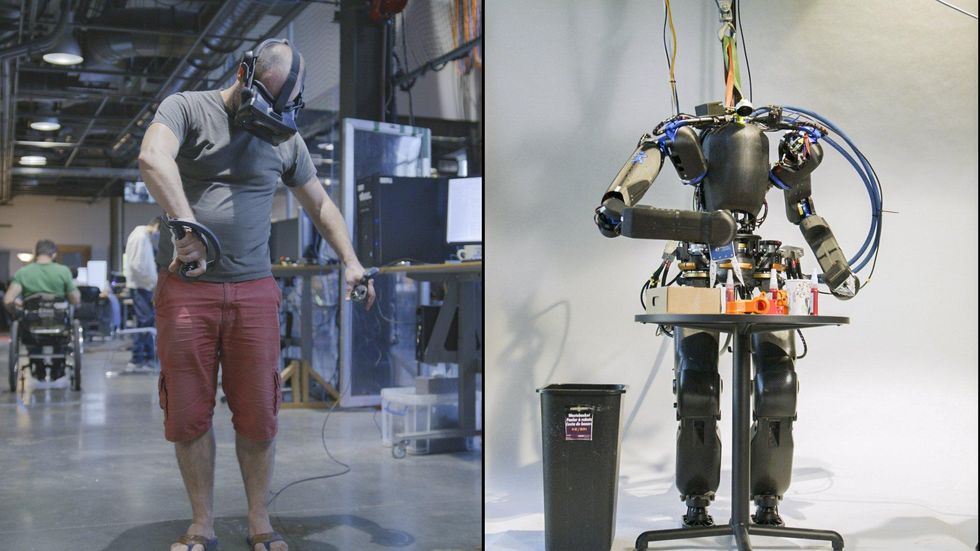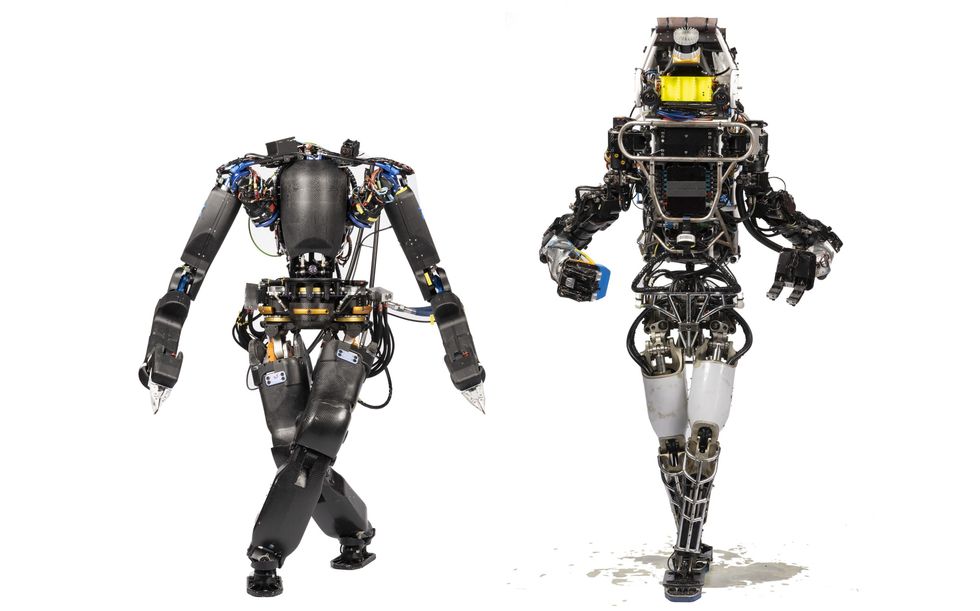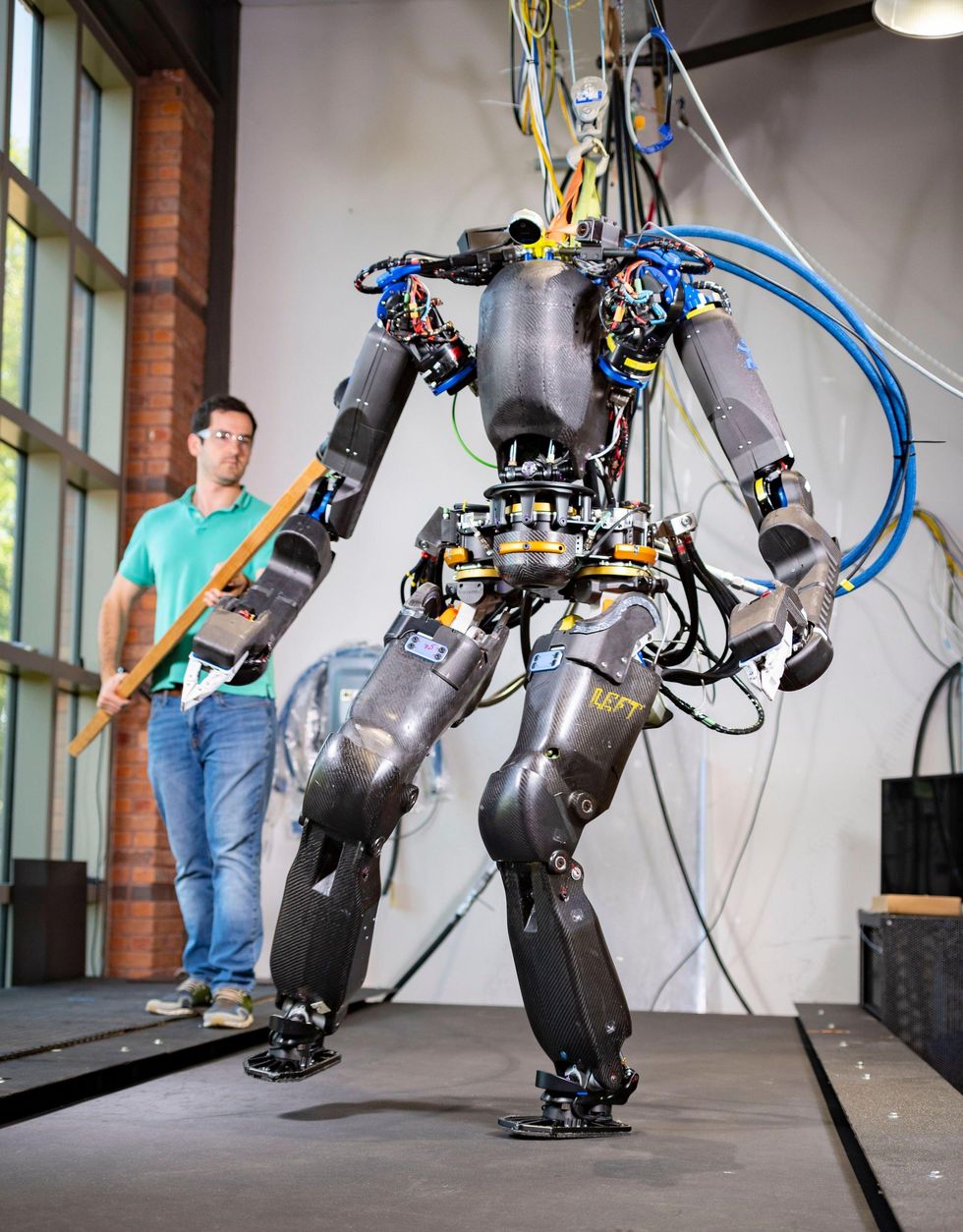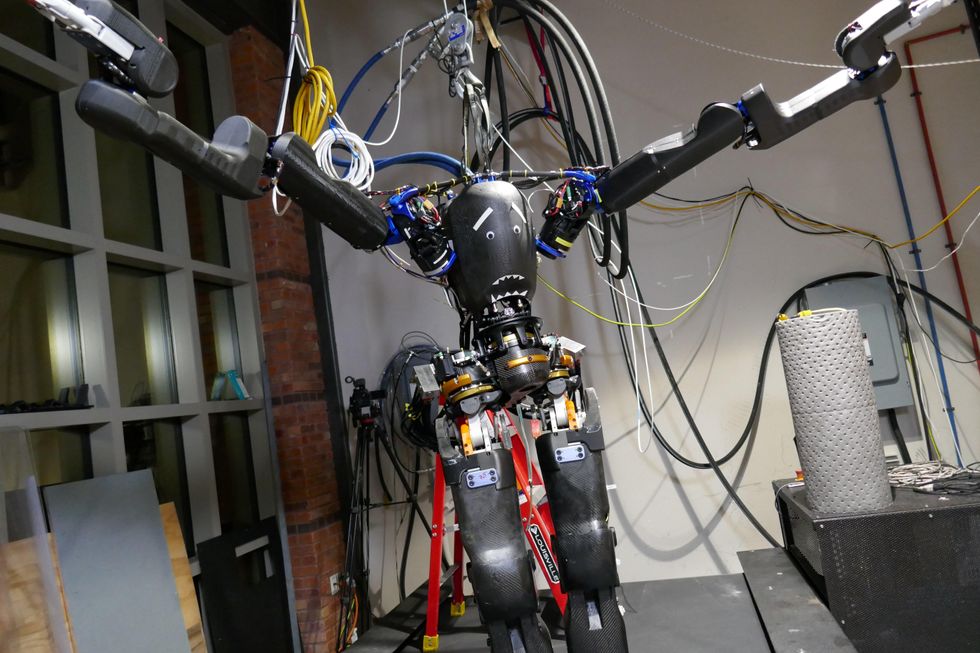IHMC’s Nadia Is a Versatile Humanoid Teammate
8 min read

The Florida Institute for Human & Device Cognition (IHMC) is properly identified in bipedal robotics circles for educating pretty advanced humanoid robots to walk. Since 2015, IHMC has been house to a Boston Dynamics Atlas (the DRC version) as very well as a NASA Valkyrie, and significant development has been created on advancing these platforms towards dependable mobility and manipulation. But fundamentally, we’re conversing about some pretty aged hardware in this article. And there just are not a lot of superior substitution choices (offered to researchers, anyway) when it will come to humanoids with human-similar toughness, speed, and versatility.
Numerous yrs back, IHMC made a decision that it was high time to develop its individual robot from scratch, and in 2019, we observed some extremely neat plastic concepts of Nadia—a humanoid made from the floor up to conduct beneficial tasks at human pace in human environments. After 16 (!) experimental plastic versions, Nadia is now a authentic robot, and it already appears to be very impressive.
For a long time, we’ve been pushing up towards the limitations of the components with DRC Atlas and Valkyrie. We haven’t been ready to completely check out the limitations of our program and our controls. With Nadia, it’s the other way close to, which is genuinely thrilling from a analysis standpoint.
—Robert Griffin, IHMC
Built to be fundamentally the next era of the DRC Atlas and Valkyrie, Nadia is a lot quicker, extra versatile, and robust adequate to make an fantastic exploration system. It’s a hybrid of electric powered and hydraulic actuators: 7 levels-of-freedom (DoF) electrical arms and a 3 DoF electrical pelvis, coupled with a 2 DoF hydraulic torso and 5 DoF hydraulic legs. The hydraulics are built-in clever actuators, which we’ve covered in the earlier. Nadia’s joints have been organized to optimize range of motion, this means that it has a dense manipulation workspace in front of by itself (in which it actually issues) as nicely as extremely mobile legs. Carbon fiber shells masking most of the robot allow for safe get hold of with the ecosystem.

Teleoperation by immersive virtual fact helps Nadia complete sophisticated duties.IHMC
That substantial manipulation workspace is especially applicable for the reason that there is a large amount of emphasis on immersive digital truth teleoperation with Nadia. Not that autonomy isn’t critical, but the principle guiding Nadia has been formed (at the very least in part) by IHMC’s expertise at the DARPA Robotics Obstacle Finals: Ideally, you want the robotic to deal with all the things it can on its have, although possessing a human ready to acquire additional immediate management about intricate responsibilities. While it is not the fantasy of a robotic being totally autonomous, the simple fact is that in the near phrase, this solution is an quickly viable way of receiving robots to reliably do practical items in unstructured environments. Total, the objective with Nadia is to function as close to human pace as doable when undertaking city exploration and manipulation duties. And if that entails a human instantly teleoperating the robotic due to the fact which is the very best way of executing matters, Nadia is made to cope with it.

Nadia demonstrates how considerably additional flexible its hips and legs are relative to DRC Atlas.IHMC
For extra particulars about Nadia, we spoke with Robert Griffin, a analysis scientist at IHMC.
How is Nadia distinctive between humanoid robots?
Robert Griffin: I think the massive issue that we’re hoping to convey to the table with Nadia is the definitely significant selection of movement of a whole lot of the joints. And it’s not just the vary of motion that differentiates Nadia from many other humanoid robots out there, it is also speed and power. Nadia has substantially better ability-to-pounds than the DRC Atlas, building it drastically a lot quicker, which improves its general operational speed as nicely as its stability.
Can you place your aims with Nadia into context in the humanoid robotics area?
Griffin: We’re making an attempt to make Nadia a robotic that can function in unstructured environments exactly where you really do not know what it wants to do ahead of time. So, rather of owning a established sequence or quantity of responsibilities, we’re hoping to build up a robotic in components, program, and interfaces that allow a human-equipment crew to go into an unfamiliar setting, examine it, map it, and then do meaningful responsibilities.
IHMC has a status for encouraging elaborate humanoid robots like DRC Atlas and Valkyrie with their mobility. How has all of that knowledge created its way into Nadia’s design and style?
Griffin: You are ideal, and we’ve been partnering with NASA JSC due to the fact the DRC—when you see Valkyrie strolling now, it is utilizing IHMC software program and controllers. When it arrives to implementing some of that knowledge to Nadia, we’ve paid out particular awareness to points like Nadia’s range of movement in its legs. In contrast to a great deal of humanoid platforms, Nadia has really excellent hip roll (or ab/adduction), which usually means that it can do seriously wide measures and also truly slim actions the place the ft overlap every other. We think that’s likely to aid enhance mobility by serving to with phase adjustment and reaching demanding footholds.
Over and above the components, we ended up also equipped to use our simulation resources and manage stack to truly assist us specify what the hardware style and design necessary to be in buy to accomplish some of these duties. We weren’t able to optimize all of the joints on the robot—we pretty a lot stuck with a single hydraulic piston in the legs, for now, but we hope that our long run types will be much better integrated and optimized. We do have whole ankle actuation, contrary to a good deal of humanoid robots. Our approach, from the beginning, was to glimpse for the vital management authority with Nadia’s ft to be able to do precise foot placement, and use that for comparatively swift reactive mobility.

Robert Griffin offers Nadia a useful shove, for science.IHMC
As you went from principle to hardware with Nadia, what compromises did you have to make?
Griffin: We’re not rather as flexible as a usual human, although we’re not very significantly off. I was surprised that we lost some array of motion in the mechanisms just because of the hydraulic hose routing, particularly around the hips, where by we preferred to stay clear of owning massive loops of hoses hanging off the robot. We eventually want to just take Nadia into the serious environment, and we do not want the hoses getting snagged on matters.
Nadia is not quite as quick as a human in some of the joints, and in some of the joints it’s speedier. We’re also not quite as compact as we required to be originally, since, perfectly, robots are actually challenging. We’re hoping to get it a small much more compact in the upcoming. And we skipped our excess weight margin by a little bit—it’s about 90 kilograms proper now, with out the hydraulic pump or battery on board.
Why did you make a decision to focus on how a human can straight management Nadia in VR, as opposed to far more emphasis on autonomy?
Griffin: Autonomy functions actually, actually very well when you know what the working ailments are, and what you are striving to carry out. Not that it is effortless to automate that, but it’s possible. We’ve experimented with some autonomous arranging and manipulation, and we located that it’s a tiny limiting in that it does not choose advantage of the total abilities of our system. And so what we’re searching at executing is trying to automate just crucial parts of the system—things like footstep scheduling and grasp preparing, which can be automated very perfectly. But we also need the means to interact with novel environments, which is why we’re concentrating on producing ways to crew with human beings via interfaces like digital truth. With the cognitive abilities of a human blended with the manipulation abilities of the robot, we believe that you get a ton of versatility.
How a lot of a variance has it made to controlling Nadia in VR, that the components has humanlike overall flexibility and a humanlike workspace?
Griffin: For manipulation, it’s been large. We don’t want the consumer to be working the robot and emotion like they’re minimal in what they can do for the reason that of the robot’s constraints. A lot of the manipulation that we’ve been capable to do with Nadia we could under no circumstances have carried out with our other platforms.
There are certainly trade-offs—the arms are far more designed for velocity than for energy, which is heading to be a small bit restricting, but we’re hoping to improve that very long-time period. I feel that coming up with the robot—and especially the handle procedure and application architecture—with the concept of acquiring a human working it has opened up a great deal of capability that we hope will allow us fast iterate together several distinct paths.
What are some things that Nadia will be uniquely capable of?
Griffin: We’re hoping that the robotic will be uniquely capable of multicontact locomotion—that’s a course that we’re really hoping to shift in, where by we’re not just relying on our ft to move by way of the earth. But I don’t always want to say that it’ll be superior at that than other robots are, simply because I really do not know every thing that other robots can do.
Are there useful tasks that you hope Nadia will be ready to do at some issue in the long run?
Griffin: Matters like disaster reaction, nuclear remediation, bomb disposal—these tasks are largely accomplished by folks right now, since we don’t have robots that are really able of performing them adequately in spite of the total of time that roboticists have been performing on it. I consider that by partnering great robotic engineering with definitely outstanding operating interfaces and human cognition, these jobs will begin to develop into feasible to do by a robot.

Who demands a serious head when you have googly eyes and a shark mouth?IHMC
Even while Nadia is brand name new, IHMC now has a bunch of upgrades prepared for the robot. The most apparent a single is slicing that tether by putting batteries and a custom hydraulic pump into Nadia’s torso. Also on the road map are larger torque arms and lighter, additional streamlined legs. In the meantime, the program has a good deal of catching up to do to let Nadia to reach its full likely. And if we know IHMC, that’s heading to be an very interesting detail to see.






